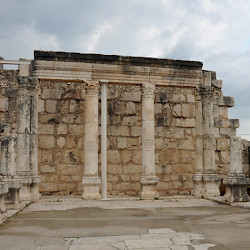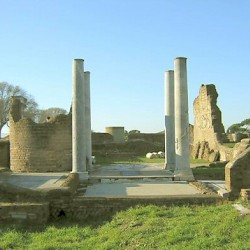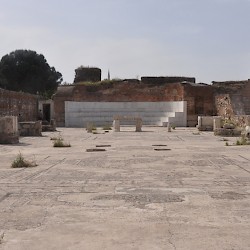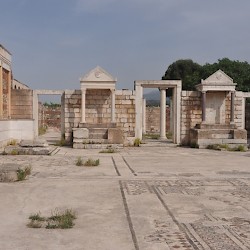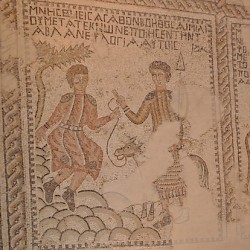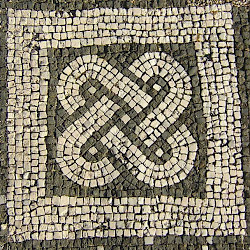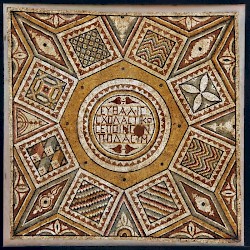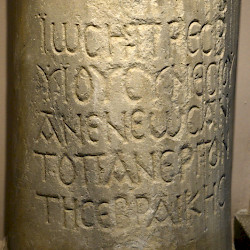Synagogue
Synagogue: place of Jewish worship.
Origins
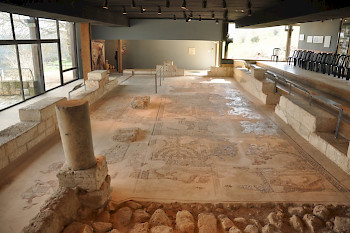
The name synagogue, “gathering”, is Greek and refers to both the activity and the place of the meeting. An alternative, older name was proseuche, which means “prayer house”.
The origins of these places of Jewish worship are contested. It is often assumed that the houses of prayer originated with the Jews who lived in the Diaspora (i.e., outside Judaea) and could not go to Jerusalem. The archaeological evidence, however, is mixed. Whatever the case may be, there were synagogues where people came together as Jewish believers.
Another point of debate is the relation between the local synagogues and the Temple in Jerusalem. At the beginning of out era, many Jewish writers considered the Temple to be corrupt. The author of the Dead Sea Scroll known as Damascus Document was convinced that the Jerusalem priesthood did not obey purity laws,note while the writer of the Testament of Moses knew that the priests were blackmailers and drunkards.note Two religious leaders, Jesus of Nazareth and Simeon son of Gamaliel protested against the temple's financial affairs.note Several modern scholars maintain that the rise of the synagogue was an expression of protest. Other researchers do not recognize such rivalry and think that the two institutions were complementary.
The Building
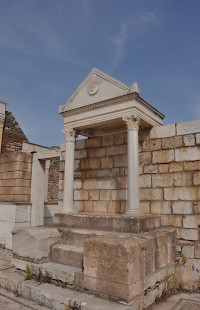
Originally, the synagogues must have been rooms in the homes of wealthy people. Around 100 BCE, an early Pharisaic leader named Yose ben Yoezer told his students that their house should be a meeting place for the sages.note Later, special halls were built for meeting purposes. They are known from a/o Apamea, Caesarea, Capernaum, Dura Europos, Ephesus, several towns in Galilee, Golgoi, Jerusalem, Myra, Ostia, Panias, Philippopolis, Sardes, Sepphoris, and Thessaloniki. In Rome were several synagogues.
A few synagogues from the Roman age have been excavated. Usually, they are quadrangular spaces, usually, with a beautiful shrine in which the scrolls were kept (the "Torah ark"), benches along the wall, and some columns to support the roof. Often, there are inscriptions that mention the benefactors (there are splendid examples from Apamea).
From Dura Europos, there is evidence for wall painting from the early third century CE. We can recognize scenes from the Torah, from the books of Samuel and Kings, from Ezekiel and Esther. A man on a throne can be the Messiah and there is a remarkable representation of the Aqedah. In Galilee, the mosaic floors of several synagogues from the early Byzantine age have been excavated. It is remarkable that we can see the sun god Helios, Dionysiac motifs, and zodiacs: a symbolism that was apparently not incompatible with Jewish faith.
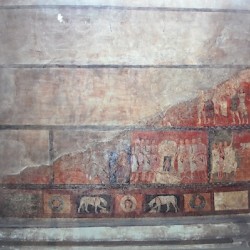 Dura Europos, Synagogue, Wall painting |
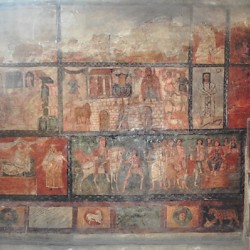 Dura Europos, Synagogue, Wall painting |
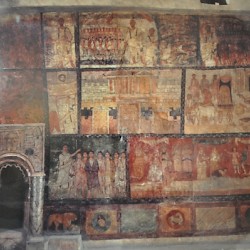 Dura Europos, Synagogue, Wall painting |
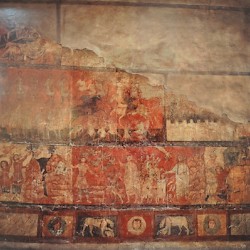 Dura Europos, Synagogue, Wall painting |
Service
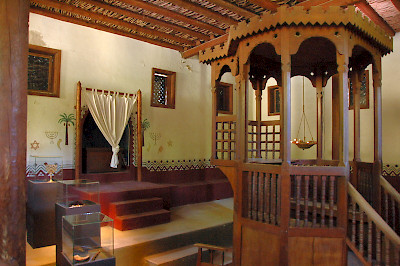
In the synagogue, people read from sacred literature, which was then explained by scribes.note We know of two reading schedules: in one of these, the Bible was read in one year, in the other one, it took three years. In both cases, however, a canon is assumed that corresponds to the current one. There must have been other schedules, based on different views about which books were inspired and which was not (cf. the Samaritan religious community).
Unlike the Temple in Jerusalem, which represented the entire Jewish nation, the synagogue was a local affair. In Rome, there were places of Jewish worship.Another difference was that everyone could be present and that every man could play a role in the daily administration. This was unlike the Temple, where the administration and the priesthood were monopolized by a few wealthy families. The main difference, however, was that the synagogue service had no sacrifices but was purely about the written word. This was unique in the ancient world.
